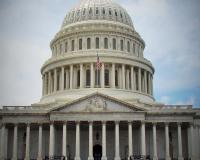
Vibrant Environment
Governance And Rule Of Law
All | Biodiversity | Climate Change and Sustainability | Environmental Justice | Governance and Rule of Law | Land Use and Natural Resources | Oceans and Coasts | Pollution Control

In Part One of this two-part blog, we looked at EPA's recently proposed Affordable Clean Energy (ACE) Rule and how it generally compares with the Obama Administration's Clean Power Plan (CPP) Rule. But with many environmental lawyers being closet economists, no contemplation of new environmental regulation is complete without a discussion of cost-benefit analysis.

On August 21, EPA introduced its much-anticipated Affordable Clean Energy (ACE) Rule to replace the Barack Obama Administration’s Clean Power Plan (CPP) Rule for regulating carbon dioxide (CO2) emissions from our nation’s aging fleet of power plants. This proposal checks off another item on the Donald Trump Administration’s deregulatory agenda and elicits a number of profound questions. What are the main differences between the ACE and the CPP? What are the implications for public health, the environment, and the electric power sector? More philosophically, why, in the 21st century, do we continue relying on a Victorian-era source of energy to power our cell phones?

When the Modern Slavery Act of 2015 went into effect in the United Kingdom, businesses were challenged to better understand their own supply chains. The Act applies to any commercial organization that does business in the United Kingdom (U.K.), and not just for its U.K.-based operations. The Act requires businesses with an annual turnover of more than £36 (USD $46.5) million to declare to the public their efforts to increase supply chain transparency and reduce the risk of environmental and social exploitation in their operations. Since the Act’s passage, there has been a marked increase in the urgency of efforts to improve Environmental and Social Governance (ESG) in businesses across all sectors. Despite this, research by the Chartered Institute of Procurement and Supply (CIPS) shows that over one-third of businesses covered by the Act are still not meeting the requirements.

An increasingly fast-paced technological world requires a restructuring in environmental protection strategy. In A New Environmentalism: The Need for a Total Strategy for Environmental Protection, ELI President Scott Fulton and Dave Rejeski, Director of ELI’s Technology, Innovation, and Environment Program, discuss how environmental protection could be organized and implemented in the future.

On Tuesday, August 28, French environment minister Nicolas Hulot announced he was quitting Emmanuel Macron’s government—on live radio. During his interview with France Inter, a frustrated Hulot explained, “I don’t want to give the illusion that my presence in government means we’re answering these issues properly—and so I have decided to leave the government.”

According to the World Bank, small-scale fisheries (SSF) in developing countries produce over one-half of total fish catch and employ almost 90 percent of part- and full-time fishers. Despite the subsector’s clear importance to food security and the financial sustainability of fisheries-dependent communities around the world, there are considerable gaps in both knowledge of and management strategies for small-scale fisheries. Because fishers in the SSF subsector are widely dispersed, it is difficult for governing bodies to collect data and make management decisions based on incomplete information. Given the precarious state of global fisheries, one-third of which are fished beyond biological sustainability, managing SSF despite the lack of data is a crucial component of sustainably feeding the world into the future.

On August 16, 2018, a federal district court in Charleston, South Carolina, enjoined EPA’s rule suspending implementation of the Waters of the United States Rule (WOTUS Rule), which was finalized by the Agency in 2015 under the Barack Obama Administration. The WOTUS Rule was enacted to clarify that wetlands, seasonal streams, and tributaries qualify as “waters of the United States” under the Clean Water Act (CWA), replacing a 1980s regulation that included interstate waters and wetlands adjacent to those waters as “waters of the United States,” but specifically excluded “waters that are themselves wetlands.” The suspension rule, which was finalized in February of this year, effectively delayed the WOTUS Rule until 2020 and reinstated the definition of “waters of the United States” under the 1980s regulation.

Uneasy tensions rest at the crossroads between democratic theory and contemporary climate change mitigation policy. The connection between human activity and the pending climate consequences caused by lack of emissions mitigation is clear. For decades, we’ve known that climate change is both anthropogenic and will cause considerable harm to the global public good, including increased intensity of natural disasters, food insecurity, drought, and sea-level rise.

On May 10, 2018, the Environmental Law Institute (ELI) and the law firm Arnold and Porter hosted a day-long conference in Washington, D.C., entitled Infrastructure Review and Permitting: Is Change in the Wind? Alex Hergott, Associate Director for Infrastructure for the White House Council on Environmental Quality (CEQ), provided the afternoon keynote. He asked the distinguished audience whether any of us thought that the NEPA process, and specifically the environmental impact statement (EIS) process, couldn’t be delivered faster, at lower cost, and with fewer pages of documentation, without forsaking environmental protections. He went on to provide many good points and examples in support of answering his own question.

With the U.S. Senate voting on July 31 to join the House of Representatives in conference on their respective Farm Bills, the two houses face major challenges to resolve the wide gaps in many elements. Reauthorized every 5 years or so, the Farm Bill is a comprehensive piece of legislation that affects all facets of the American food supply.